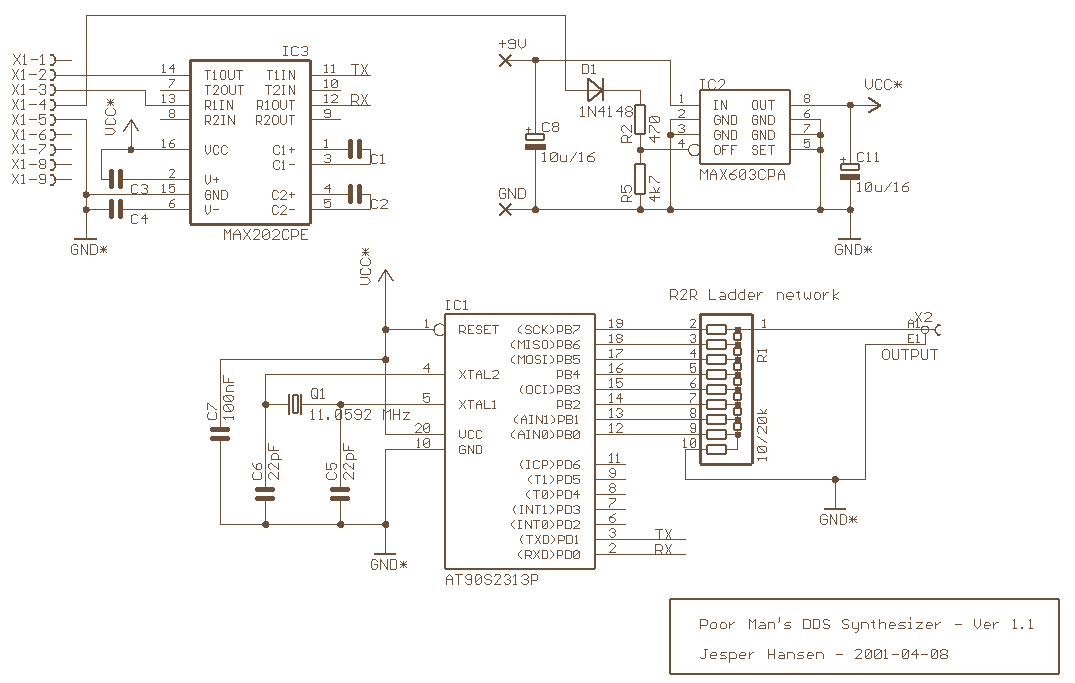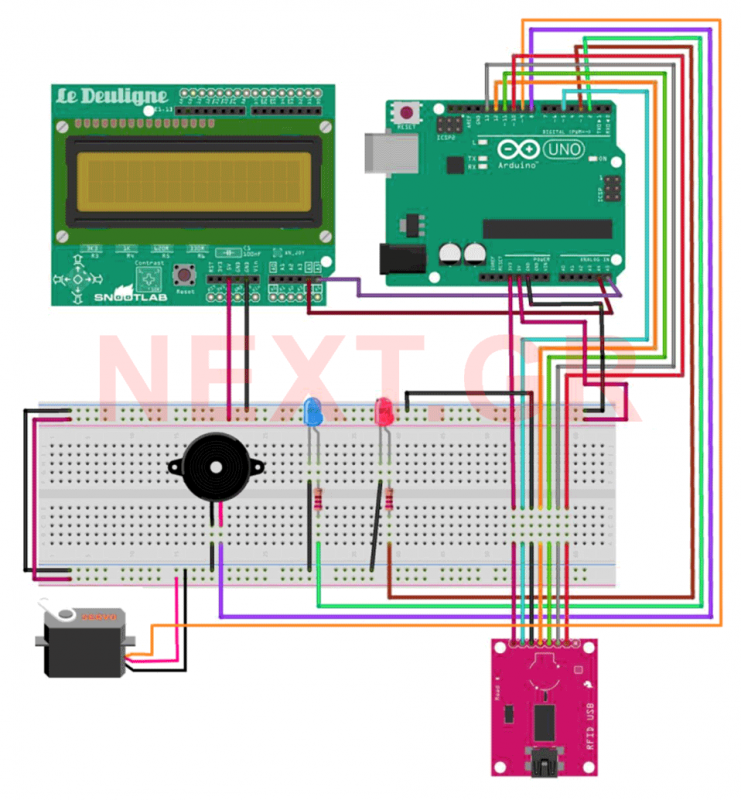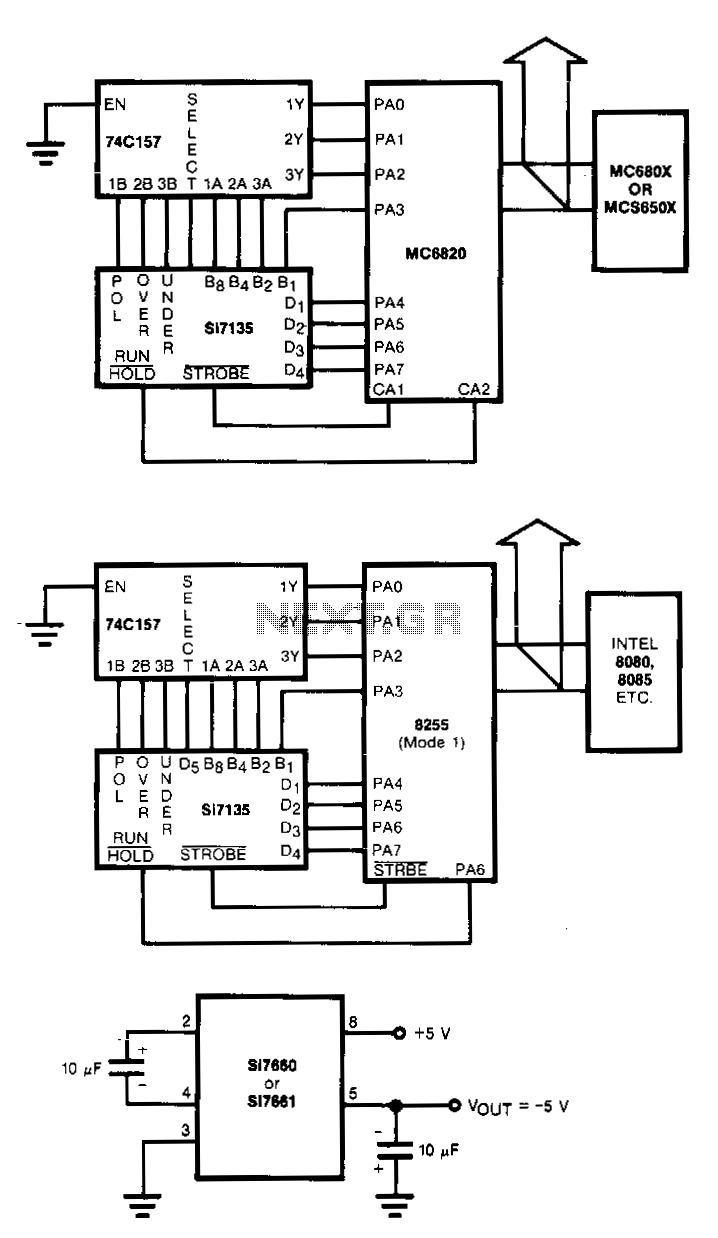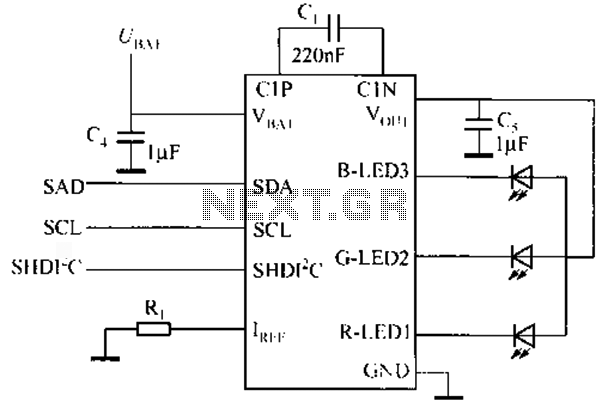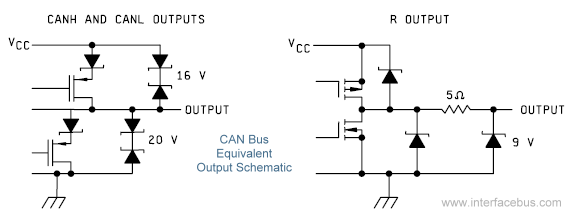
how to interface rfid with 8051
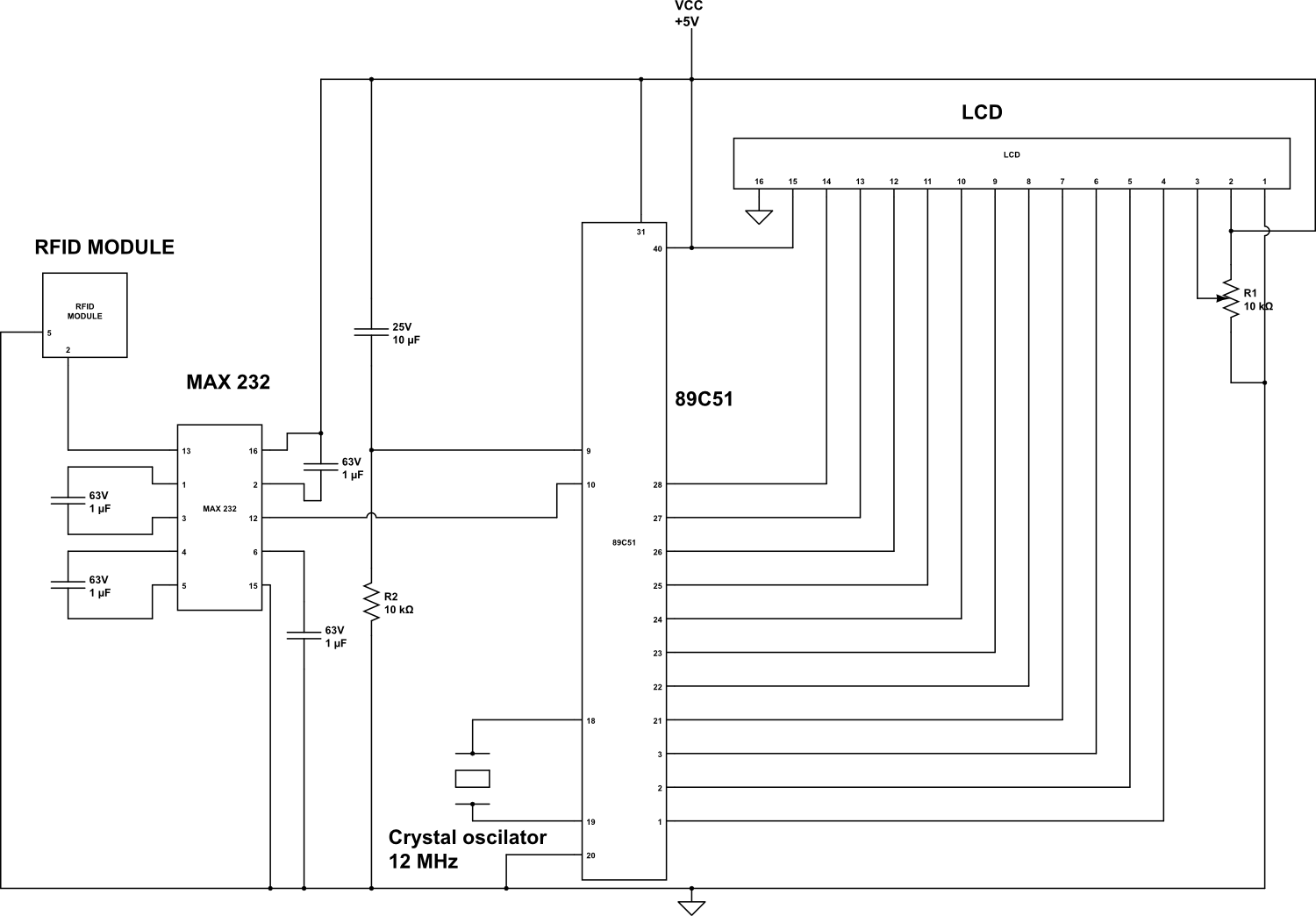
An RFID (Radio-frequency identification and detection) reader is a device used to communicate with RFID tags by receiving and transmitting signals. These signals utilize radio waves for wireless communication. RFID tags are applied to products, individuals, or animals for identification and tracking purposes. Identification occurs through a unique serial number. This topic covers the interfacing of a passive RFID system with the AT89C51 microcontroller. The code of the RFID tag is also displayed on an LCD interface. Free source code for the program is available in C. An RFID module consists of two main components: a tag and a reader. A typical RFID system includes an antenna, a transceiver, and a transponder (RF tag). The radio frequency is read by the transceiver, and the information is transferred to a device for further processing. The unique serial number to be transmitted is stored in the RF tag or transponder. The transponder contains a chip and an antenna mounted on a substrate. The chip transmits relevant information through the antenna, which also receives electromagnetic waves sent by the RFID reader. Different RFID tags operate at various frequencies; in this case, low-frequency 125 kHz RFID tags are used, which function within a range of 10 cm. When an RFID tag enters this range, the reader detects it and sends a unique code of the tag serially. This serial code, consisting of 12 bytes, is received by the microcontroller. A serial level converter is necessary for the AT89C51 to receive these serial signals, and the ICMAX232 is employed for this purpose to interface the RFID reader with the microcontroller. The circuit connections are as follows: Receiver 1 (R1) of the MAX232 is used for serial communication. The receiver pin of the RFID reader is connected to R1IN (pin 13) of the MAX232. R1OUT (pin 12) of the MAX232 is connected to RxD (P3.0) of the microcontroller.
The RFID reader system described operates as a complete solution for identifying and tracking objects using RFID technology. The AT89C51 microcontroller serves as the central processing unit, managing the data flow from the RFID reader to the user interface, which is presented on an LCD display. The RFID reader emits radio waves that energize the RFID tags within its detection range, allowing the tags to transmit their unique serial numbers back to the reader.
The use of the ICMAX232 level converter is critical for ensuring compatibility between the RFID reader's output and the AT89C51's input requirements. The MAX232 converts the signal levels from the RFID reader, which typically operates at TTL levels, to the voltage levels required by the microcontroller. This conversion is essential for reliable communication, as mismatched voltage levels can lead to data corruption or communication failure.
In the schematic, the RFID reader's output is connected to the R1IN pin of the MAX232, which processes the incoming serial data. The output from the MAX232 (R1OUT) is then sent to the RxD pin of the AT89C51, allowing the microcontroller to read the incoming data. The microcontroller is programmed to interpret the serial data, extract the unique serial number of the RFID tag, and display it on the LCD interface for user feedback.
The choice of a low-frequency RFID system, specifically the 125 kHz tags, is suitable for applications requiring short-range communication, such as access control or inventory management. The system's range of approximately 10 cm is adequate for many practical scenarios, ensuring that the RFID tags can be read reliably without interference from nearby objects. Overall, this RFID reader system exemplifies a practical application of microcontroller interfacing with RFID technology, demonstrating the integration of hardware components and software programming to achieve a functional electronic system.An RFID(Radio-frequency identification and detection) reader is a device which is used to communicate with RFID tags by receiving and transmitting signals. These signals use radio waves for wireless communication. RFID tag is applied to products, individuals or animals to identify and track them. The identification is done through a unique serial nu mber. This topic covers the interfacing of a passive RFID system withAT89C51. The code of RFID tag is also displayed on anLCDinterface. The free source code for the program isavailablein C. AnRFIDmodule basically consists of two parts, namely, a tag and a reader. A typical RFID system consists of an antenna, a transceiver and a transponder (RF tag). The radio frequency is read by the transceiver and the information is transferred to a device for further processing. The information (the unique serial number) to be transmitted is stored in the RF tag or transponder. The transponder contains a chip and an antenna mounted on a substrate. The chip transmits the relevant information through antenna. The antenna also receives the electromagnetic waves sent by the RFID reader. Different RFID tags work on different frequencies. Here low frequency, 125 kHz, RFID tags have been used. These tags work within a range of 10 cm. When an RFID tag comes in this range, the reader detects it and sends a unique code of the tag serially.
This serial code, consisting of 12 bytes, is received by the microcontroller. A serial level converter is required forAT89C51to receive these serial signals. ICMAX232has been used for this purpose to interface the RFID reader with microcontroller. The circuit connections are as follows: Receiver1 (R1) of MAX232 has been used for the serial communication. The receiver pin of RFID reader is connected to R1IN (pin13) of MAX232. R1OUT (pin 12) of MAX232 is connected to RxD (P3. 0) of microcontroller. 🔗 External reference
The RFID reader system described operates as a complete solution for identifying and tracking objects using RFID technology. The AT89C51 microcontroller serves as the central processing unit, managing the data flow from the RFID reader to the user interface, which is presented on an LCD display. The RFID reader emits radio waves that energize the RFID tags within its detection range, allowing the tags to transmit their unique serial numbers back to the reader.
The use of the ICMAX232 level converter is critical for ensuring compatibility between the RFID reader's output and the AT89C51's input requirements. The MAX232 converts the signal levels from the RFID reader, which typically operates at TTL levels, to the voltage levels required by the microcontroller. This conversion is essential for reliable communication, as mismatched voltage levels can lead to data corruption or communication failure.
In the schematic, the RFID reader's output is connected to the R1IN pin of the MAX232, which processes the incoming serial data. The output from the MAX232 (R1OUT) is then sent to the RxD pin of the AT89C51, allowing the microcontroller to read the incoming data. The microcontroller is programmed to interpret the serial data, extract the unique serial number of the RFID tag, and display it on the LCD interface for user feedback.
The choice of a low-frequency RFID system, specifically the 125 kHz tags, is suitable for applications requiring short-range communication, such as access control or inventory management. The system's range of approximately 10 cm is adequate for many practical scenarios, ensuring that the RFID tags can be read reliably without interference from nearby objects. Overall, this RFID reader system exemplifies a practical application of microcontroller interfacing with RFID technology, demonstrating the integration of hardware components and software programming to achieve a functional electronic system.An RFID(Radio-frequency identification and detection) reader is a device which is used to communicate with RFID tags by receiving and transmitting signals. These signals use radio waves for wireless communication. RFID tag is applied to products, individuals or animals to identify and track them. The identification is done through a unique serial nu mber. This topic covers the interfacing of a passive RFID system withAT89C51. The code of RFID tag is also displayed on anLCDinterface. The free source code for the program isavailablein C. AnRFIDmodule basically consists of two parts, namely, a tag and a reader. A typical RFID system consists of an antenna, a transceiver and a transponder (RF tag). The radio frequency is read by the transceiver and the information is transferred to a device for further processing. The information (the unique serial number) to be transmitted is stored in the RF tag or transponder. The transponder contains a chip and an antenna mounted on a substrate. The chip transmits the relevant information through antenna. The antenna also receives the electromagnetic waves sent by the RFID reader. Different RFID tags work on different frequencies. Here low frequency, 125 kHz, RFID tags have been used. These tags work within a range of 10 cm. When an RFID tag comes in this range, the reader detects it and sends a unique code of the tag serially.
This serial code, consisting of 12 bytes, is received by the microcontroller. A serial level converter is required forAT89C51to receive these serial signals. ICMAX232has been used for this purpose to interface the RFID reader with microcontroller. The circuit connections are as follows: Receiver1 (R1) of MAX232 has been used for the serial communication. The receiver pin of RFID reader is connected to R1IN (pin13) of MAX232. R1OUT (pin 12) of MAX232 is connected to RxD (P3. 0) of microcontroller. 🔗 External reference
